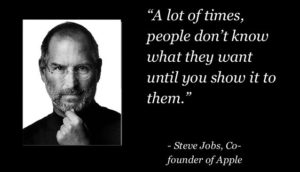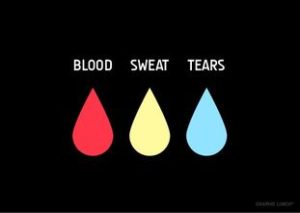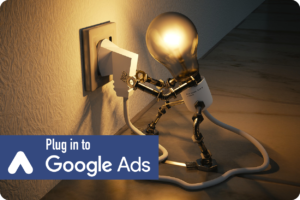
Whenever you decide to paint a room very few people just pick up a roller and start painting the entire room without looking at multiple swatches, or painting small spots of paint to see how it looks in the room.
I myself definitely need to use a bunch of samples before painting.
Being colorblind I am very unsure about what color I am actually spreading across the wall and how it looks to other people.
In my most recent painting project, I decided that a dark red would look good in the basement with a light tan. (I am a person that values a level of class in my man cave.)
After painting a couple spots on the walls, I invited my brother to come over and give his “full color” opinion.
What I thought was a beautiful khaki color turned out to be a delightful light pink accented by a bright blood red.
My basement basically would have looked like I was inspired by Hello Kitty, but yet the kitty may have been part of a murder scene.

So how does this relate to marketing? Although, in our personal lives we commonly mitigate risk we do not in marketing.
Marketers commonly say no to numerous ideas, saying that trying something new has too many risks. This fear of failure gets us to follow the worst phrase of all time, “This is what we have always done!”
In doing so, we actively avoid opportunities for growth and do not pursue great ideas.
 Like this photo? Here is where you can buy it
Like this photo? Here is where you can buy it
What marketers should be asking, “how do we mitigate risks?” Looking for ways to continually try new tactics but minimizing their exposure or reach to test their value.
So how do we make little paint swatches instead of going all in? Here are the top ways through marketing segmentation.
Slow rollouts
Marketing professionals commonly think about rollouts for brick and mortar retailers, utility, or communication companies.
For them, it makes a lot of sense to move new products or grids to one geographical location before moving it to a national or worldwide scale to save money and to accurately measure the demand of a target audience.
Although this is the most common application, it is not the only one. This strategy can be applied to any business.
For online retailers, maybe you only wish to put a new product in one distribution center and do not want to ship across the country. By using geo-tracking and/or customer data, only show that product to people in your targeted area.
If the product sells well, think about rolling it out to the next DC. If it fails, you have invested minimally and had a very little negative impact.
For software or service companies, maybe you have local salespeople or consultants.
Utilizing a new service where they are would minimize the exposure and risk compared to a national or international release, while also the potential of increasing market penetration and decreasing travel cost to those services acquired.
Email sends
After you have spent years continually collecting emails and other contact information you want to talk to them, but that does not mean you need to talk to all of your prospects/customers at once.
It’s not always “all or nothing!” You do not always have to SEND IT to all your contacts.

If you are trying something new, or something that seems a little outside of your typical branding why not just do a small send and see how your contacts react to it?
Now don’t just send out 10 emails and call that a test. With that small of a sample, all your data is irrelevant.
Aim to have at least one thousand recipients to make an adequate test. Compare your stats next to your typical engagement, if the numbers are similar maybe test the emails side by side with an A/B test.
Testing messaging through other mediums
Do you have some new messaging that you wonder how your prospects will respond to?
The typical response is for people to change their site and cross their fingers,
“Hope this works!”

The thing is, your website is prime real estate. Although it is a great area to test messaging it is also the one that comes with the highest risk if it goes south.
So, what are some safer, less risky options? Try remarketing ads through social media or through display networks. Use visual ads to target people that have previously been on your site with a variety of different messages.
As the ads increase their impressions, you will be able to notice trends as to which messages are preferred by the audience by seeing the higher click-through rates and conversions.
The best performer may be the best fit for your website messaging.
A/B Testing
A/B testing is by far the most common test and one of the most decisive ways of testing. This is because it compares two separate mediums at the same time, eliminating many of the variables that may play a role in the metrics (like sending a test email during the week vs. a weekend)
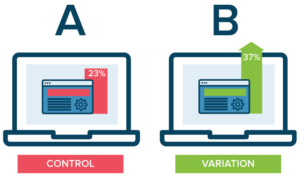 If you are testing email, A/B tests are a standard functionality for most email providers, if you are testing landing pages A/B test can be done on WordPress though a plugin and executed through other landing page creators like Unbounce or Hubspot.
If you are testing email, A/B tests are a standard functionality for most email providers, if you are testing landing pages A/B test can be done on WordPress though a plugin and executed through other landing page creators like Unbounce or Hubspot.
Keep in mind, when you do A/B tests. Do not change a lot. The goal of the A/B test is to see what elements your target audience prefers.
If the two mediums are COMPLETELY different, you will have no idea what the actual preference is. Whether the CTA color, overall messaging, background, images, etc.
Customer Surveys
It is funny that most marketers don’t think of asking their prospects/customers for help.
We are not all Steve Jobs, who had a natural instinct for what consumers wanted –
Before launching a new campaign or product release ask your current customers if they feel the messaging would have attracted them in their buying process, or ask them if this new feature would be a benefit.
This step is commonly not executed for what I believe to be due to pride. Sometimes businesses do not like to actively ask for help and want to portray that they know it all.
Asking customers is not a sign of weakness it is a sign of caring. This test helps to gain valuable insights while also driving more loyalty through your client base, simply because people LOVE to be heard.
MVP – Minimum Viable Product
The budget is a quick reason for people to say no to new ideas. Whether it is the creation of a new software product or implementing a new platform.
Take for example B2B companies now moving to eCommerce.
A lot of distributors that do not have an online presence are talking immediately to SAP, Netsuite, Magento, Insite, or other very expensive eCommerce platforms.
Moving to platforms like these cost thousands of dollars, massive consulting fees, a long implementation, and a dedicated staff to maintain it.
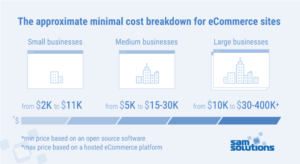
This approach is an all-in approach through Waterfall project management.
Meaning you are spending a lot of time and money to create something, and you hope to all god it will meet the needs of your customers at the end.
The less risky option is to create a minimal viable product (MVP) through platforms that are far cheaper – WooCommerce, 3dCart, BigCommerce, or Shopify.
Create a basic site, invite a few customers and diligently listen to and observe what they want. If they don’t want eCommerce at all, then you only wasted minimal capital and resources.
Conclusion
As marketers and business owners, don’t say no to change due to risk or fear of failure but find out ways to mitigate the risks through tests and minimizing the repercussions of failure.
And of course, stay away from:
“THIS IS WHAT WE’VE ALWAYS DONE!”
Never RISK missing a Marketing Carpenter article.
Subscribe!

